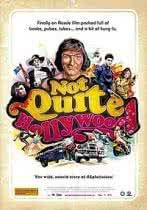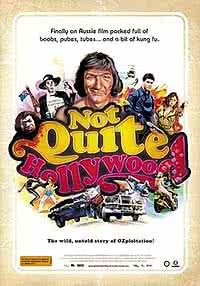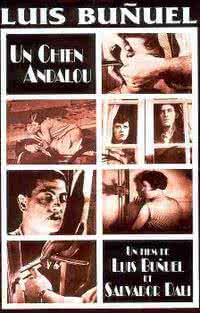This evening I viewed Un Chien Andalou by Luis Bunuel and Salvador Dali, which raised a topic which has preyed on my mind a lot lately, that of overt sexuality and the presence of sex in art and how that makes me feel.
Before just recently, I would often become confused and uncomfortable when viewing sex on screen. I believe that feeling comes from a sort of repression in my own feelings towards sex, and a lack of understanding about how to interpret and process an act of sex in a piece of art, when I’m usually, and honestly, only used to seeing it in pornography. When a man would become lecherous towards a woman in cinematic movie, I would immediately dismiss the character as flawed and under-developed, a somewhat backwards human being. The adaption of my view came from a documentary entitled Not Quite Hollywood, an exploration of Australian cinema throughout the 1970’s and 1980’s. What became apparent and what is discussed at length during the film was that what I would consider a b or c -grade film, men chasing after women and objectifying them, was seen as being the norm in the early 70’s, even widely accepted enough to give the Australian film industry its first big boom throughout its’ tenure on Australian cinema screens. This shocked me, that such rampant sexual innuendo and behavior was so accepted that couples would flock to drive-in cinemas in droves to watch men and women have sex and behave in an overtly sexual way to each other on screen with hundreds of people around them. Nowadays these sorts of film are resigned to the strict arthouse market or pornography, which strikes me to ask why this sort of thing isn’t popular anymore.
Clearly the rise of women’s liberation and the entire 60’s rebellion played a huge part in reducing the amount of objectification of women that was seen on screen. In the movie Rebecca Gilling, a well-known Australian actress, mentions that in a review of a film she appeared in, the critic was more concerned with the condition of her breasts then they were with her acting, which seemed to become the norm throughout the 70’s in films such as Barry McKenzie, Alvin Purple, Stork and Felicity. However, the documentary also points out that a lot of the more reputable film critics (Ron Saw, Bob Ellis) in Australia loathed the industry that had formed around the sorts of films, and the filmmakers who shared their view were responsible for making more well regarded classics of Australian cinema like Picnic At Hanging Rock, Breaker Morant and My Brilliant Career. However no-one ever stops short of praising the films for laying the groundwork to the successful industry we have here today.
I guess my point is that I previously had no real understanding of the clear fact that overtly open and transparent sexuality was so commonplace in the 70’s, and really holds weight as a very large part of Australian culture, something that I feel is being repressed nowadays with such bizarre censorship laws. The doco illustrates that our censorship laws now are almost as archaic as they were in the 60’s, and I find it so strange that films that were made 30-40 years ago had looser restrictions on them than films being made now. I ponder whether that’s a result of the public’s perception/repression of how we see ourselves or whether its being held back by the industry for specific reasons. I feel that these films were nothing more than self-expression, however chauvinist and backwards they were in their views towards women, which was nothing more than a sign of the times.
To reign it all back in to my own understandings, I was prompted to write about this after viewing Un Chien Andalou, a film which has just reached its 80th anniversary. Bunuel and Dali do very little to structure this film in any way, the thematic structure coming more from their own dreams than from any preconceived notion of linear story-telling. The lecherous ‘lover’ character is seen lusting after the ‘wife’ character in the film, with open shots of her breasts and clear references to the vagina throughout the film. I understand very little about French film in general, but I do understand that they have always been more relaxed towards depictions of sex and genitalia on screen. I guess, from my point of view, this is just an outburst thats stems from coming across something which I did not realize was so apparent in the history of art before, but the more I think about it, the more it makes sense for artists to take out their own sexual repressions and desires through their art, and the more I realize how prevalent it is. It prevents the artists from becoming the lecherous characters that they depict so vividly in their films and helps the audience to maybe be more at peace with their own sexuality. It’s has certainly made me think of ways to introduce it into my own art, and to relax a bit more about the entire topic.



